
9 minute read
Built for the corrode ahead
Larry Chen, Dr Nihal Obeyesekere, Thusitha Wickramarachchi, and Dr Jonathan Wylde, Clariant Oil Services, USA,
analyse high temperature stable corrosion inhibitor development for deepwater applications.



With increasing world energy demands, the petroleum industry has explored and produced in much more hostile subsea and deepwater environments. This has resulted in many high pressure, high temperature (HPHT) oil and gas wells around the globe. Consequently, the demand for high temperature stable and umbilical deliverable corrosion inhibitors has also increased. The demand is even higher for high temperature eff ective and environmentally acceptable corrosion inhibitors.1,2,3
It is very challenging to develop chemicals that are both thermally stable and eff ective for the HPHT conditions oft en prevalent in deepwater applications. As part of a study, several water-soluble and oil-soluble products have been developed that are thermally stable above 200˚C (390˚F) and maintain high corrosion inhibition eff icacy. One product was found to be stable at 200˚C for 2 months under inert HPHT conditions.4,5,6
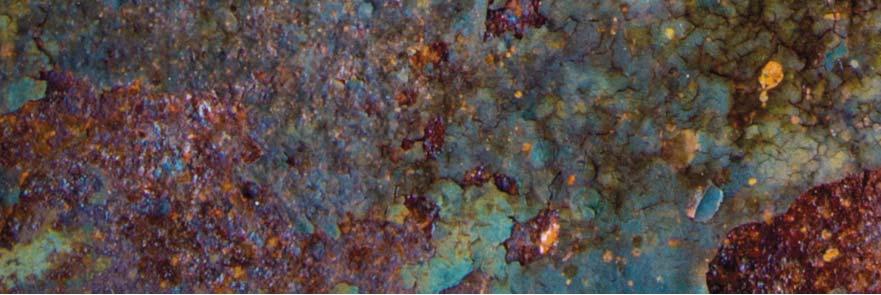
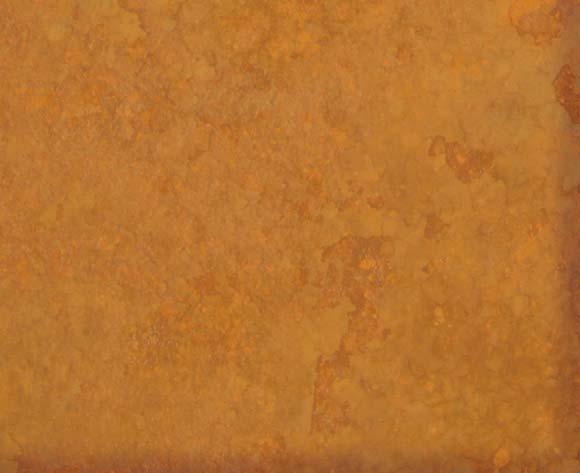
BUILT BUILT FOR THE FOR THE CORRODE CORRODE AHEAD AHEAD

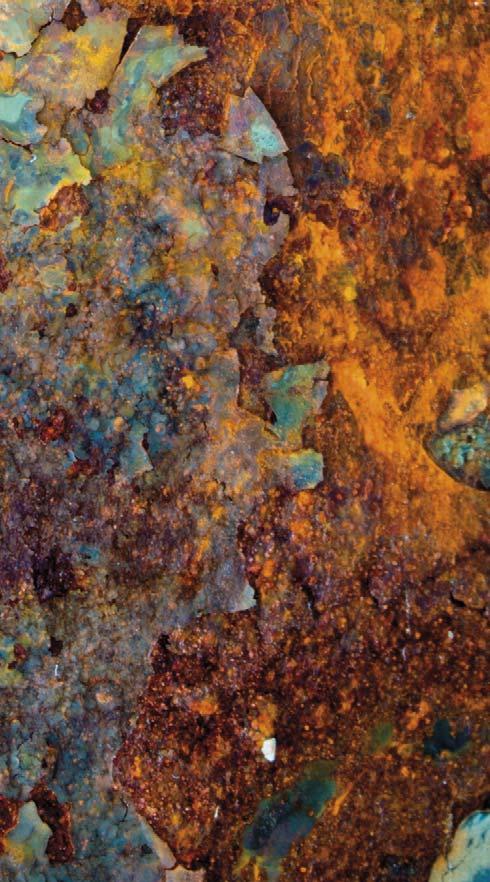

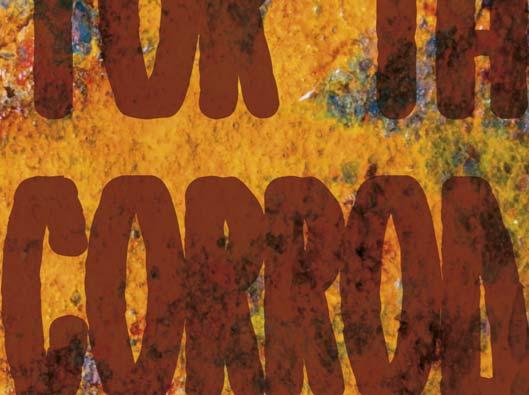
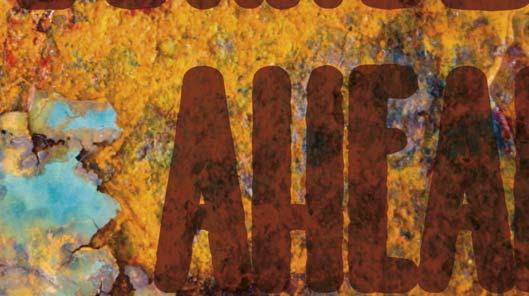
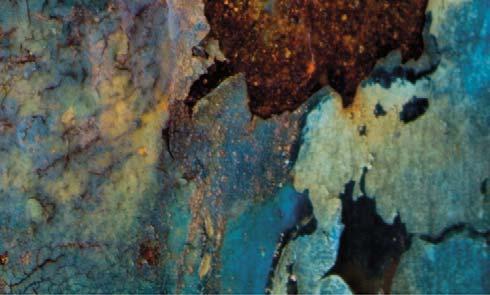
Chemical design and qualification
More than 100 chlorine (CI) formulations were designed and tested during this study. The active chemicals were blended with high flash point solvents to yield 35 – 40% activity for equal comparison convenience. Any formulated products that were unstable (e.g. phase separated) were rejected. The remaining products were screened and evaluated to qualify for subsea high temperature applications by following the principles laid out in API 17 TR5 and API 17 TR6 for qualifying subsea production chemicals.
RCE tests (Rotating Cylinder Electrode, ASTM G185) were used to initially screen all experimental blends at shear stress of 7 Pa – this technique is limited to low temperature (<90˚C) and low pressure (1 bar). To test under HPHT conditions, RCA testing (Rotating Cage Autoclave, ASTM G184) ensured the products performed up to shear conditions of 40 Pa.7 Finally, higher shear testing was performed on a jet impingement device (ASTM G208, shown in Figure 1). Synthetic brine was used for all performance tests and real field oil was used as required by the tests.
As well as inhibition eff icacy testing, the ‘secondary performance properties’ are equally important. These include: inhibitor partitioning, emulsion and foaming tendency, fluid compatibility, material compatibility, chemical thermal stability, chemical cleanliness (filtration specification), fluidity and pumpability, dynamic stability loop and EcoTox tests. It is important that experimental blends can perform over a wide range of temperatures and pressures, which explains the extent of the testing required, designed to mimic the extreme tortuous path that the chemical would have to endure as it travels through the cold, high pressure umbilical tube (4˚C and up to 12 000 psi) and as it travels downhole, enduring extreme highs of temperature and pressure (>200˚C and up to 12 000 psi).
Results and discussion
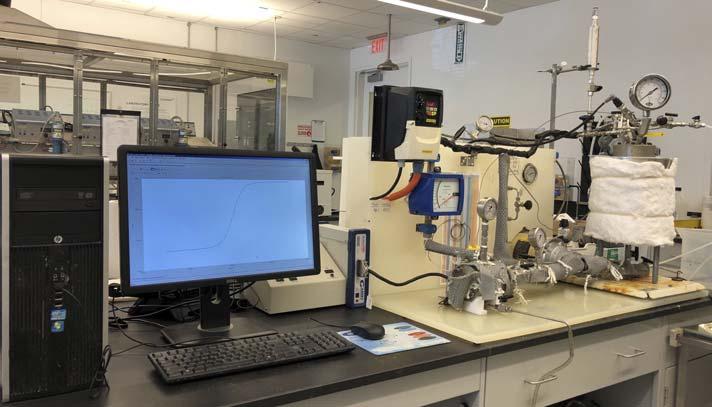
Figure 1. Jet impingement system for high shear testing. Chemical thermal stability testing Four shortlisted products (A, B, C and D – already screened in thermal stability tests at 4˚C and 121˚C) were subjected to 200˚C for 48 hours and observed for signs of instability. The four products showed no signs of degradation aft er thermal exposure, as best indicated by Fourier transform infrared (FTIR) analysis. Figure 2 details Product B before and aft er ageing at 200˚C, demonstrating the product had the highest FTIR spectroscopy match-up of 95.87% between the heated and unheated samples. SAE filtration was also performed on the before and aft er thermal exposure as a secondary gauge of stability and no additional particulates were created in the chemicals aft er exposure.

Figure 2. FTIR comparison graph between a fresh Product B and the thermal aged

Figure 3. RCE test results – dosed 50 ppm chemical. RCE screening test Products A, B, C and D were evaluated by RCE using 50 ppm of chemical to distinguish the corrosion inhibition properties. The results showed that unheated Product B provided the quickest corrosion rate drop from the baseline in the first 2 hours aft er CI addition and achieved an overall 97.4% inhibition. In comparison, heated Product B provided 96.6% corrosion inhibition.
Product B at 200˚C for 48 hours. A corrosion rate vs time graph is shown in Figure 3.
RCA and jet impingement testing The RCE screening identified Product B as the best performing CI and this was taken forward to HPHT RCA testing. Test conditions were 200˚C, 1600 psi (0.21% carbon dioxide [CO2] + 0.00036% hydrogen sulfide [H2S] balanced with nitrogen [N2]), shear stress of 40 Pa, a CI dosage of 400 ppm all ran for 7 days using X65 steel coupons. Both heated and unheated Product B were tested in parallel and both products achieved a corrosion rate <3 mpy (>95% eff iciency when compared to a blank). All test results are shown in Table 1, with examples of coupon pitting analysis in Figure 4.
Product B was tested in the jet impingement at a shear stress of 1500 Pa. There was an average baseline corrosion rate of 2539 mpy and a corrosion rate of 127 mpy at the end of the test at a dose rate of 600 ppm with a protection rate of 95%. This test demonstrated the high tenacity of the corrosion inhibitor film once allowed to adsorb onto the electrode surface in the jet.
Secondary performance testing Foaming tendency was evaluated with the high salinity brine. The results showed that Product B did not create a persistent and stable foam, even when tested up to 4000 ppm. At application dose rates (400 ppm) the foam height generated in the sparge test was insignificant and collapsed in approximately 10 seconds.
Product
Product B (unheated)
Product B (heated)
Coupon number Initial Post Weight loss (g) Corosion rate (mpy)
81 21.4797 21.4462 0.0335 2.71
82 21.3242 21.2915 0.0327 2.65
83 21.0990 21.0690 0.0300 2.43
94 21.3283 21.2933 0.0350 2.84
95 21.1953 21.1624 0.0329 2.67
96 21.3109 21.2769 0.0340 2.76
Average CR (mpy) % protection
2.60 95.70
2.75 95.45
Similarly, emulsion tendency
30 21.1396 20.3131 0.8265 66.98
testing showed that at 400 ppm, Product B addition yielded a clean water phase aft er just
Blank 31 20.6040 19.8792 0.7248 58.73
32 20.7076 20.0203 0.6873 55.69 60.47 0
5 minutes aft er agitation with a clean interface and homogeneous oil phase. Even at 10 times the recommended dose (i.e. 4000 ppm) the water phase showed only some yellowness/haziness aft er 30 minutes.
High pressure viscometry of aged and non-aged Product B was performed at 4˚C and up to 12 000 psi. Both products tested had a maximum viscosity of 40 cP (in accordance with the guidance for umbilical delivery (<50 cP at 12 000 psi) in deepwater applications).
One of the harsher stability tests performed was the ‘subsea flow loop test’, which consists of 4 x 500 cm, ¼ in. internal dia. (ID) SS316L coils contained within a chiller bath. HPLC pumps are utilised to circulate the chemical through the loops and a series of strategically placed pressure transducers employed for recording the diff erential pressure (DP) across the inlet and outlet of the coils and inline-filters. The principle of the test is to simulate the tortuous path a chemical undergoes during umbilical injection. Heated Product B was tested and, aft er circulation for 7 days, the in-line filters were removed from the loop and visually examined, and no deposition was confirmed.
Fluid compatibility was tested in case of contact with completion brine. No precipitates and solids were observed when Product B was exposed to fully saturated calcium chloride (CaCl2) and calcium bromide (CaBr2) bines at 400 ppm and 4000 ppm.
EcoTox testing was performed on Product B to determine any impact on typical marine organisms. Results showed the components within Product B to be highly biodegradable (per OECD 306 testing) and do not have a propensity to bioaccumulate (Log Pow <3 per OECD 116). Toxicity testing showed minimal eff ect to Menidia Beryllina Larvival but an impact was noted against Mysidopasis Bahia, showing Product B has a degree of toxicity.
PulseEight PulseEight
Dynamic Downhole Reservoir Management System DynamicDownholeReservoirManagementSystem
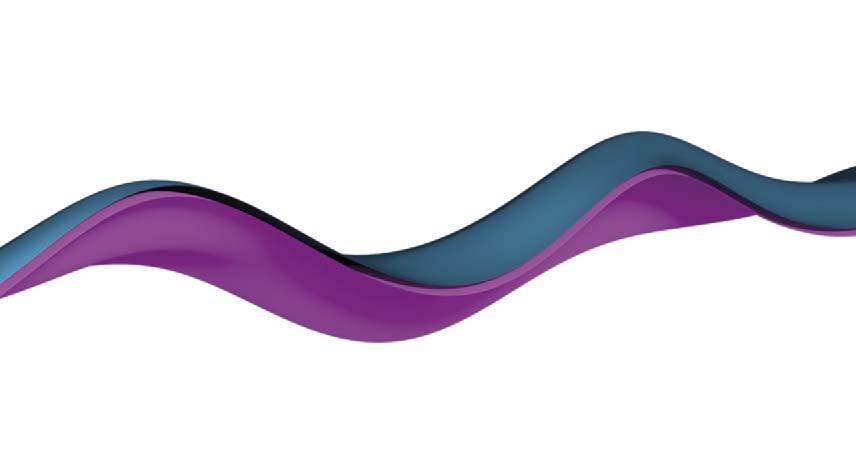

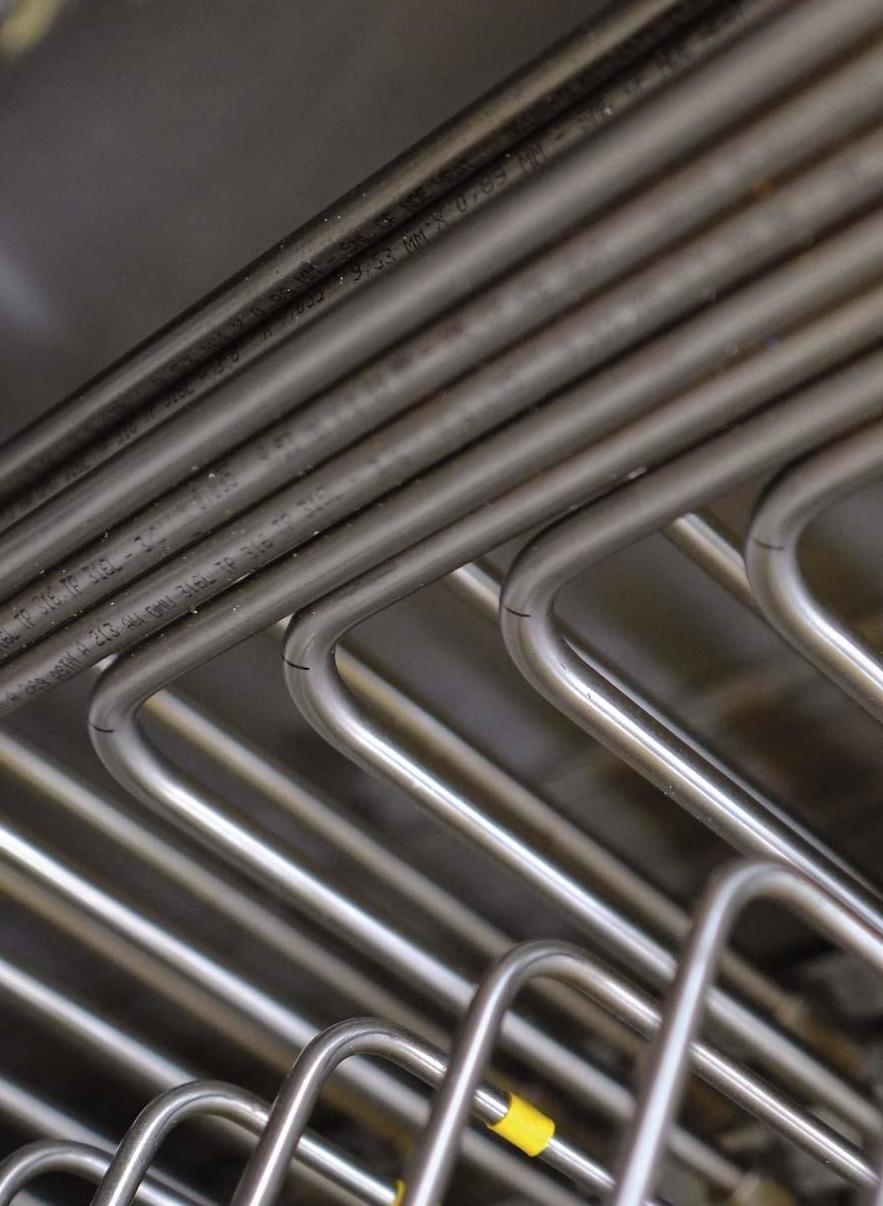

#nextwave
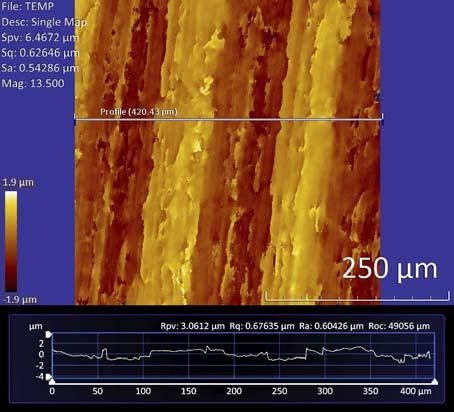
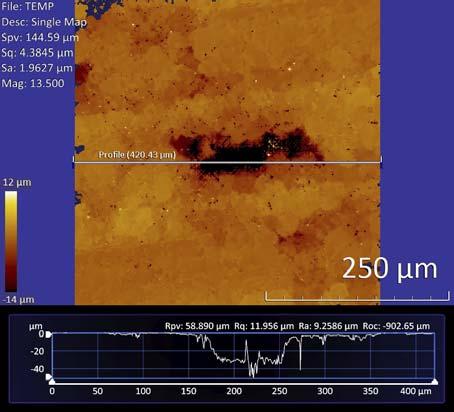
deepwater applications. Extensive performance testing is deemed (2001). necessary to manage the risk of application, where Product B showed excellent thermal stability at static and dynamic conditions under high temperature (>200˚C) and high pressure conditions. This water-soluble product was stable to 200˚C for more than 2 months. Product B showed outstanding corrosion inhibition within varied flow regimes under low and high shear stress in autoclave and jet impingement tests, passing all other secondary performance testing. The field application of this product in the Gulf of Mexico will be reported in
Figure 4. Untreated blank coupon showing large pit (>50 µm depth) (left ); coupon treated with 400 ppm heated Product B, no pits (only polishing lines) (right). References 1. OBEYESEKERE, N., NARAGHI, A., CHEN, L., ZHOU, S., and WANG, S., ‘Novel Corrosion Inhibitors for High Temperature Conclusion Applications,’ CORROSION 2005, Paper No. 05636 (2005). 2. SMITH, J. R. L., SMART, A. U., and TWIGG, M. V., ‘The Reaction of Amine. As offshore deepwater oil production continues to expand, Polyamine and Amino Alcohol Corrosion Inhibitors in Water at High Temperature,’ Journal of the Chemical Society, Perkin Transactions 2, (1992), producers and service companies alike are challenged with pp. 939 – 947. harsher conditions of temperature, shear, salinity and pressure. 3. QURAISHI, M. A., ‘Tailoring and Synthesis of Corrosion Inhibitors,’ Chemical injection via umbilical plays a vital role in deepwater CORROSION 2004, Paper No. 04400 (2004). 4. ESAKLUL, K. A., and BALLARD, A. L., ‘Challenges in the Design of Corrosion and ultra-deepwater chemical applications. The chemical and Erosion Monitoring for Deepwater Subsea Equipment – Stretching the cleanliness is extremely important in these harsher environments Limits of Technology,’ CORROSION 2007, Paper No. 07338 (2007). 5. OBEYESEKERE, N., NARAGHI, A., CHEN, L., ZHOU, S., and ABAYARATHNA, D., for umbilical applications. Exceptional measures must be ‘Synthesis and Evaluation of Biopolymers as Low Toxicity Corrosion Inhibitors taken to ensure that the corrosion inhibitor performance is not for North Sea Oil Fields,’ CORROSION 2001, Paper No. 01049 (2004). 6. OBEYESEKERE, N., NARAGHI, A., PRASAD, R., and MONTGOMERIE, H., compromised due to these harsher conditions. ‘Environmentally Friendly Corrosion Inhibitors for CO2 Corrosion,’
Product B is an example of a carefully formulated, customised CORROSION 2000, Paper No. 00020 (2000). CI and was selected among many experimental blends for 7. SKOGSBERG, L. A., and MIGLIN, B. P., ‘Establishment of Corrosion Inhibitor Performance in Deepwater Conditions,’ CORROSION 2001, Paper No. 01005 the near future.
A global industry requires a global publication











